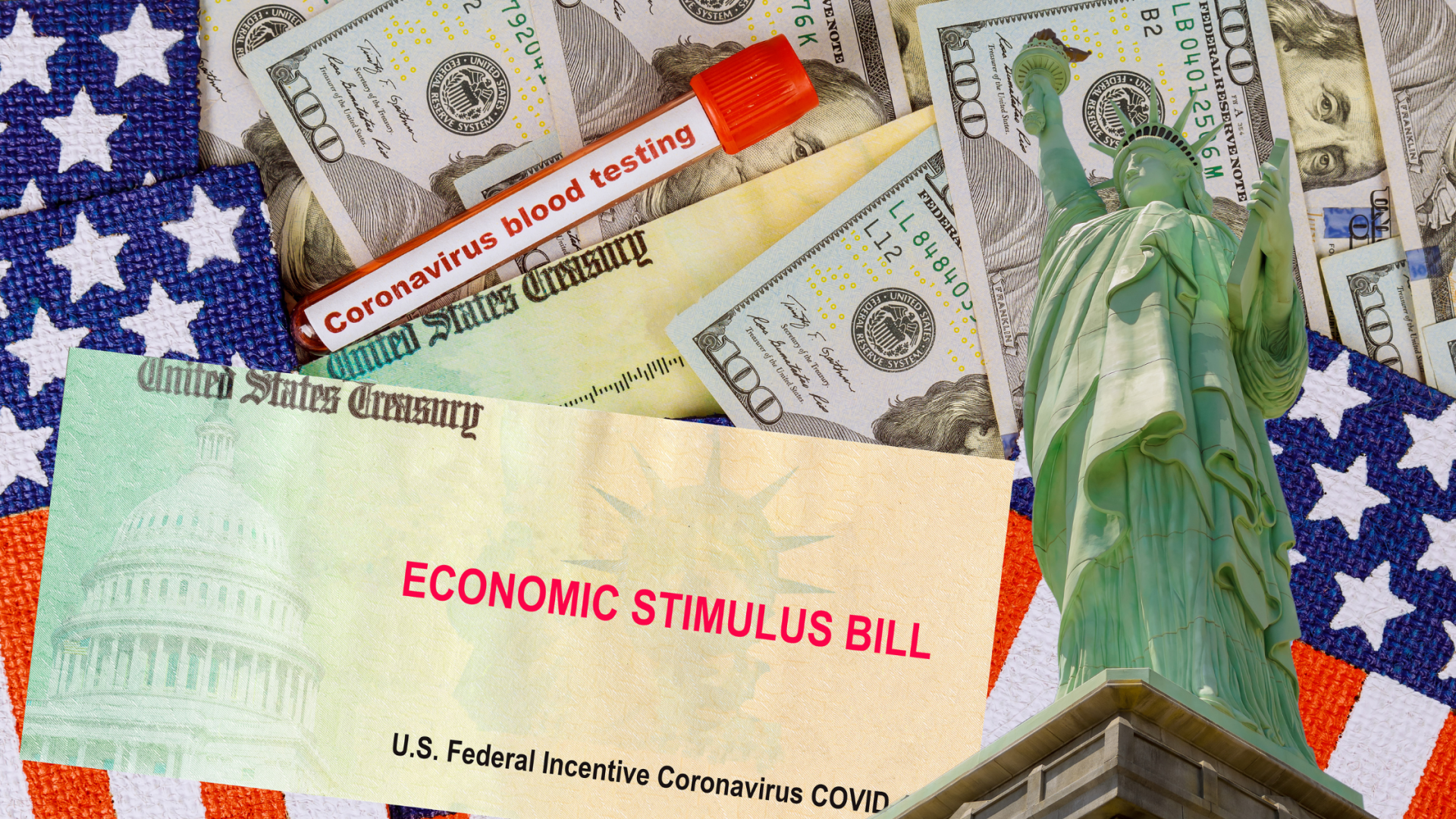President Trump Signs Stimulus Package Overview
December 29, 2020

Recently, President Trump signed into law the new COVID-19 fiscal relief package. The package and its 5,000 plus pages are clearly too lengthy to go through in this format, but below are some bullets providing a 30,000-foot overview of the key provisions of the law and the areas affected:
Unemployment
- Includes requirement for applicants to provide documentation of employment (not just self-certification as is currently the case) and requires states to verify applicant identity. Also includes Return-to-Work reporting requirements states to have a mechanism for employers to report when someone turns down a job and notifying claimants of the requirement to accept suitable work.
- Additional federal $300 per week add-on from Dec. 26 through April 5, with an application deadline of March 14.
- Extends federal funding of 50% of the cost for reimbursable employers until March 14.
- Extends and phases out Pandemic Unemployment Assistance (PUA), a temporary federal program covering self-employed and gig workers, to April 5, with an application deadline of March 14.
- Extends and phases out Pandemic Emergency Unemployment Compensation (PEUC), which provides additional weeks when state unemployment runs out, to April 5.
Stimulus Checks
- $600 Stimulus Checks/Payments per eligible individual, including dependent children.
- Stimulus Checks begins to phase out for individuals with Adjusted Gross Income (AGI) of $75,000, $112,500 for head of household, and $150,000 for married filing jointly.
- Ineligible individuals are nonresident aliens and adult dependents.
- Retroactively fixes the “mixed status” issue from CARES where a resident is married to a nonresident alien.
Paid Leave:
Families First Coronavirus Response Act (FFCRA) tax credits for paid leave are extended through March 31, 2021. However, the mandate to provide paid leave is not extended.
- Allows self-employed individuals to use the prior year’s earnings for determining paid leave amount COVID Tax Provisions.
- New York State’s Quarantine Leave Law, which requires that New York Employers provide job-protected sick leave to employees who are subject to a mandatory or precautionary order of quarantine or isolation, does NOT expire at the end of the year.
- Employers should still consider the DOL’s past guidance on the FFCRA while determining how to comply with the new legislation until additional information is released. Additionally, it is critical that employers update their existing FFCRA leave forms to take into consideration the changes. Since employees are not eligible to receive more leave than was provided through the FFCRA, employers must ensure they keep accurate records to reflect leave provided for all employees.
Support for Small Business and Farmers
Payroll Protection Program Modifications: additional $284.45 billion in funding
- Extends covered period through March 31, 2021.
- Clarifies that business expenses paid for with forgiven PPP funds remain deductible.
- Simplifies the Loan forgiveness process for borrowers with PPP loans of $150,000 or less.
- Expands the forgivable expenses to include supplier costs and investments in facility modifications and personal protective equipment required to operate safely.
- Enhances borrower flexibility by allowing borrowers to select their loan forgiveness covered period between 8 weeks and 24 weeks.
- Allows PPP borrowers to include additional group insurance payments when calculating their PPP payroll costs. Covering insurance plans such as vision, dental, disability and life insurance.
- Establishes the loan amount calculation for farmers and ranchers to align more accurately with recent years’ income.
- Expands PPP eligibility for certain 501(c)(6) nonprofits and Destination Marketing Organizations with 300 or fewer employees that do not receive more than 15% of their revenue from lobbying.
- Allows forgiveness for PPP loans and Economic Injury Disaster Loans (EIDL), emergency advance grants, preventing small business owners from being left with unexpected PPP loan balances.
Second round of PPP for businesses with 300 or fewer employees and a 25% revenue loss.
- Max loan of 2.5X average monthly payroll up to $2 million.
- Accommodations and Food Services may receive a loan up to 3.5X average monthly payroll.
Economic Injury Disaster Loans:
Additional $20 billion for the Small Business Administration’s (SBA’s) Economic Injury Disaster Loan (EIDL) advance program
Agriculture ($13 billion)
- $1.5B to purchase food and agriculture products and distribute to Non-Governmental Organizations (NGOs).
- Allows United States Department of Agriculture (USDA) to carry out a dairy recourse loan program to make purchases of dairy products from processors, packagers, merchants, marketers, wholesalers, and distributors.
- $100M for Specialty Crop Block Grants.
- Supports supplemental Dairy Margin Coverage support. Includes $400M to support dairy donations to non-profit entities like food banks.
Employee Retention Tax Credit expanded and extended through June 30, 2021
- Credit rate increased from 50% to 70% of qualified wages.
- Increases the limit on per-employee creditable wages from $10,000 for the year to $10,000 for each quarter.
- Eligibility expansions
- Reduction in the required year-over-year gross receipts decline from 50% to 20%, including a safe harbor allowing employers to use prior quarter gross receipts to determine eligibility.
- Increase in the 100-employee delineation for determining the relevant qualified wage base to employers with 500 or fewer employees.
- Allows certain public instrumentalities to claim the credit.
- Removes the 30-day wage limitation, allowing employers to, for example, claim the credit for bonus pay to essential workers; Allows businesses with 500 or fewer employees to advance the credit at any point during the quarter based on wages paid in the same quarter in a previous year.
- Provides rules to allow new employers who were not in existence for all or part of 2019 to be able to claim the credit; and
- Provides that employers who receive PPP loans may still qualify for the Employee Retention Tax Credit (ERTC) with respect to wages that are not paid for with forgiven PPP proceeds.
Financial Services
- Includes an explicit “hold harmless” provision for PPP lenders.
- Provides for PPP lender reimbursement by SBA for new PPP loans.
- Loans of less than $50,000 that is equal to the lesser of 50% of the loan principal or $2,500.
- Loans of more than $50,000 and not more than $350,000 equal to 5% of the loan principal.
- Loans of more than $350,000 and less than $2,00,000 equal to 3% of the loan principal; and
- Loans of more than $2,000,000 equal to 1%.
- Clarifies lender reimbursement by SBA shall be made no later than 5 days post-disbursement.
- Extends exemption from compliance with the Current Expected Credit Loss (CECL) accounting standard for an additional year, through January 1, 2022.
- Extends enhancement of the National Credit Union Administration’s (NCUA’s) Central Liquidity Facility (CLF) by temporarily increasing the CLF’s maximum legal borrowing authority and allowing more credit unions to borrow from the CLF. Access to this facility for an additional year, through December 31, 2021.
- Extends the temporary suspension of the Generally Accepted Accounting Principles (GAAP) requirements for the Troubled Debt Restructuring (TDR) classifications on loans for an additional year, to January 1, 2022.
Rental Assistance
- $25 billion for states, territories, tribes, and large cities to assist renters. Grantees are able to use funds to provide direct financial assistance or housing stability services to eligible households.
- Eligible households may receive up to 12 months of assistance, plus an additional 3 months if necessary, to ensure housing stability. Grantees can only commit to assistance in 3-month increments, after which point any household deemed to be eligible to receive the funds, must re-apply.
- An “eligible household” is defined as a renter household that meets the following criteria:
- Qualifies for unemployment or has experienced a reduction in household income, incurred significant costs, or experienced a financial hardship related to COVID-19.
- Demonstrates a risk of experiencing homelessness or housing instability; and
- Has a household income at or below 80 percent of the median income of the area.
- An application for rental assistance may be made directly to a grantee by either an eligible household or by a landlord on behalf of that eligible household. In general, grantees will provide funds directly to landlords and/or utility service providers. If a landlord does not wish to participate, the grantee may provide funds directly to the eligible household.
- Extends the eviction moratorium issued by the Centers for Disease Control and Prevention (CDC) through January 31, 2021.
Airline Employees and Contractors:
- $16B for the Payroll Support Program
- Other Tax Provisions
- Lower excise taxes for breweries, wineries, and distilleries made permanent
- New Markets Tax Credit extended for 5 years
- Work Opportunity Tax Credit extended for 5 years
Support for Infrastructure
Transportation: ($43 billion)
- $10B for Highway Infrastructure programs including $9.8 for Surface Transportation Block Grants to states
- $14B in Transit Infrastructure Grants ($13.3B urban, $679M non-urban)
- $2B in grants-in-aid for airports
- $1B for Amtrak
Broadband:
$7 billion for high-speed broadband projects.
If you have any questions, please reach out to SimcoHR.
Sign up for our newsletter.

The IRS recently announced the updated retirement plan contribution limits for 2026, reflecting cost-of-living adjustments and new guidance under the SECURE 2.0 Act. Whether you’re an employer managing a company plan or an employee planning for your future, these changes are important to understand so you can make the most of your retirement savings. Key Increases for 2026 Some of the most notable updates for defined contribution plans, including 401(k), 403(b), and 457(b) plans, are summarized in the chart below:

As we move into 2026, employers across many states and localities are preparing for significant minimum wage increases. Nearly 20 states and more than 40 local jurisdictions will raise their wage thresholds effective January 1, 2026. This poses important planning, budgeting, and compliance considerations, especially for mid-sized employers like those that partner with Simco, where payroll, HR, benefits and advisory services intersect. Below we’ve summarized key state and local minimum wage updates and outlined the steps you should take now to stay ahead of the changes and mitigate risk. State-Level Minimum Wage Increases (January 1, 2026) The table below highlights selected state increases scheduled for January 1, 2026.

When HR Is Overloaded, Your Business Feels It For many small to mid-sized businesses, HR is one of the most critical (and most overextended) functions. From payroll and benefits to onboarding and compliance reporting, administrative tasks can quickly consume your team’s time, leaving little room for strategic work that actually moves the business forward. Sound familiar? You’re not alone. A recent survey from Champions of Change: isolved’s Fourth-Annual HR Leaders’ Research Study found that 51% of HR leaders spend four or more hours a day answering repetitive questions. This time could be better spent on employee engagement, culture, and growth initiatives. When HR teams are pulled in too many directions, the consequences ripple across the entire organization, resulting in missed deadlines, frustrated staff, compliance risks, and ultimately, higher turnover. Why HR Leaders Consider Outsourcing Outsourcing HR isn’t just for businesses without dedicated HR teams. In fact, a survey of 1,000 HR decision-makers found that 76% could benefit from outsourcing certain tasks, even though only 54% currently have plans to do so. HR outsourcing allows organizations to offload both core and strategic tasks, including payroll, benefits administration, recruitment, onboarding, compliance support, performance management, employee relations, and workforce analytics, without adding headcount. This augmentation provides a multiplier effect: a small HR team can function like a much larger one, accomplishing more in less time. By leveraging experienced HR professionals through outsourcing, organizations can free up internal HR teams to focus on initiatives that directly impact business growth, such as talent development, employee engagement, and culture-building. Routine administrative tasks, when handled externally, no longer distract from these high-value priorities. The True Cost of Administrative Overload Overburdened HR teams don’t just affect your internal operations; they impact your employees’ experience. Inconsistent onboarding can create a rocky first impression for new hires. Delayed payroll or benefits questions lead to frustration and decreased trust. Compliance oversights expose your business to fines and legal risk. Even small inefficiencies add up. According to the National Association of Professional Employer Organizations (NAPEO), organizations that leverage an outsourced HR model achieve an average ROI of 27.2% per year, saving around $1,775 per employee while paying $1,395 per employee for outsourced services. That’s not just cost savings, it’s a reinvestment in your team and your business. The Power of Strategic HR Outsourcing Outsourcing doesn’t mean giving up control or handing HR off to a faceless provider. Done strategically, it’s about extending your team. Administrative tasks like payroll, benefits, onboarding, and reporting can be handled efficiently by experts, while HR teams gain confidence that compliance requirements are being met. Most importantly, it frees internal HR to pivot from reactive, day-to-day tasks toward engagement, culture-building, and retention strategies. Outsourced HR support can scale with your business, providing additional expertise during busy periods, leaves of absence, or rapid growth phases. The impact is clear. Teams feel supported, employees feel heard, and the organization operates smarter, not harder. With the right outsourcing partner, a small HR team can act like a team of 10, and a team of five can perform like a team of 25, all while maintaining compliance and efficiency. Retention Starts With the Right Employee Experience When administrative burdens are reduced, HR teams can focus on creating meaningful experiences for employees. Transparent processes around pay, benefits, and policies build trust. Faster, more organized onboarding leaves a strong first impression. Access to modern self-service HCM tools empowers employees to manage their own information, reducing repetitive questions and improving engagement. By leveraging experienced HR professionals to handle gaps in internal processes, organizations can enhance overall employee satisfaction, ensuring every interaction, from onboarding to open enrollment, feels seamless and supportive. A Smarter Approach to HR Means a Stronger Business Across industries, companies are recognizing that HR outsourcing is no longer a luxury. It’s a strategic advantage. Organizations that adopt a blended model of technology and advisory support report measurable reductions in administrative workload, cost savings compared to maintaining fully in-house HR teams, and improved engagement for employees. Strategic HR outsourcing allows internal teams to shift from transactional tasks to big-picture initiatives, creating a more resilient, efficient, and high-performing workforce. At the end of the day, HR isn’t just a function; it’s the backbone of your organization. When it’s overextended, the entire business suffers. But with the right support, HR teams can focus on meaningful initiatives, employees feel more valued, and the business benefits from measurable ROI. Strategic HR outsourcing isn’t about replacing your team, it’s about empowering it. Your people, your culture, and your bottom line all benefit. Curious how Simco's HR Advisory services can help your business? Let's talk today.

